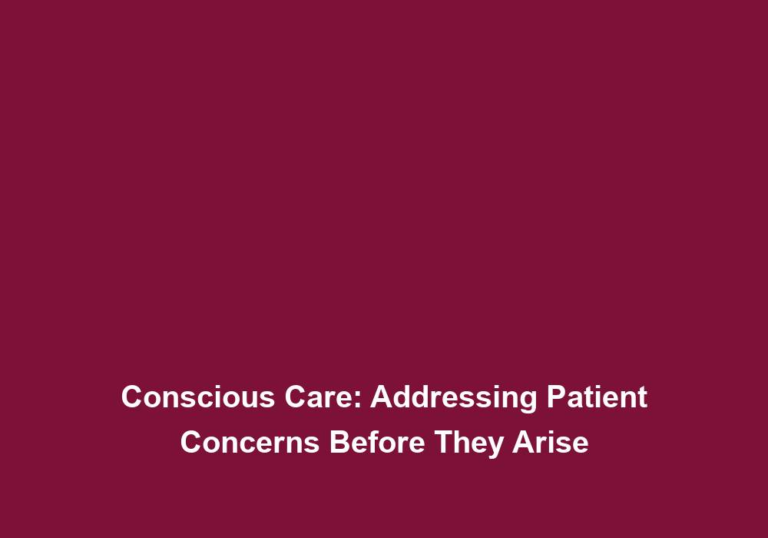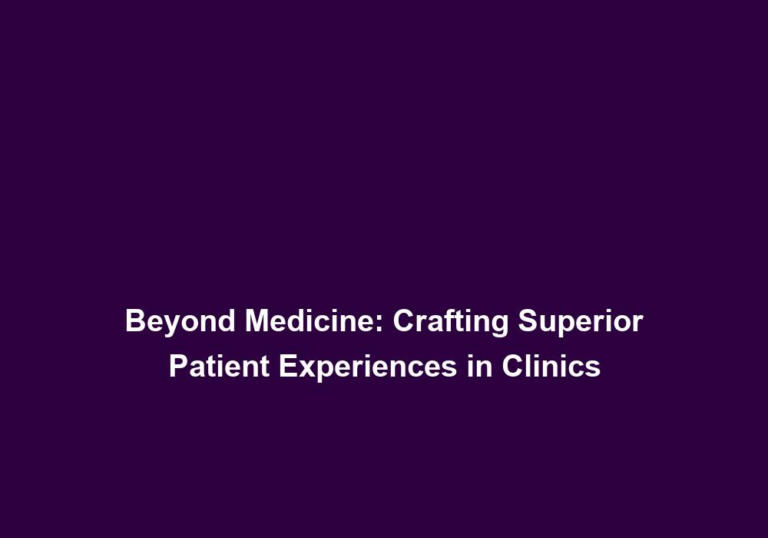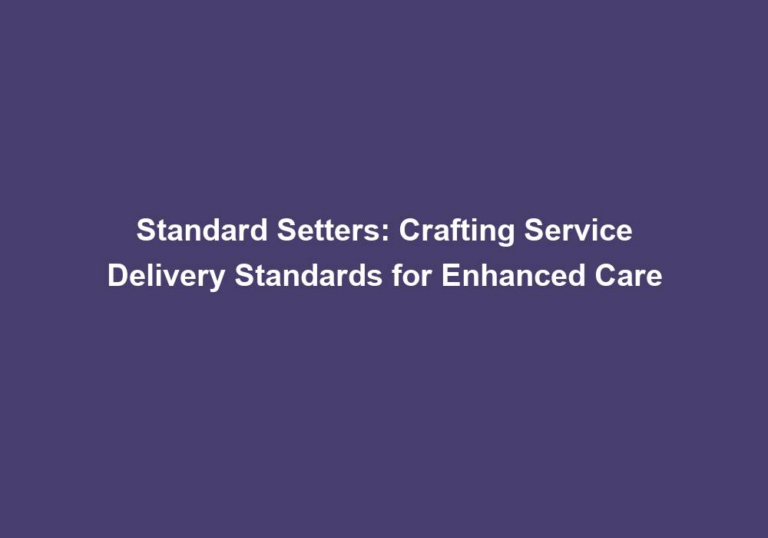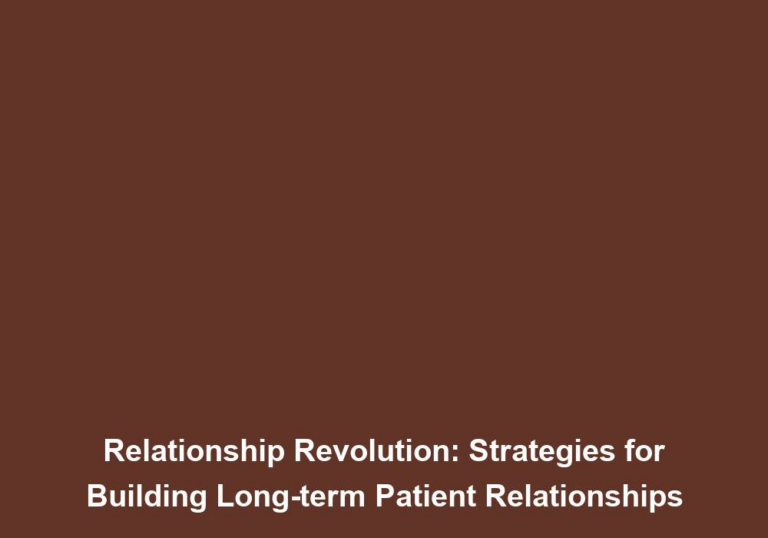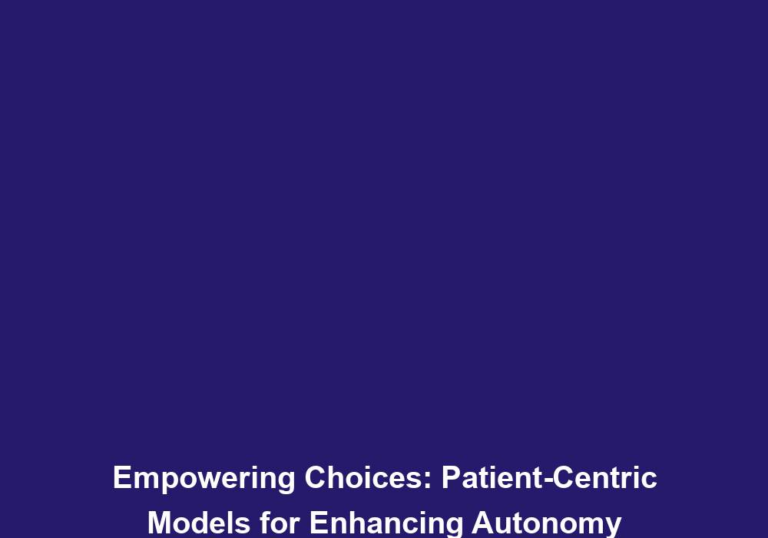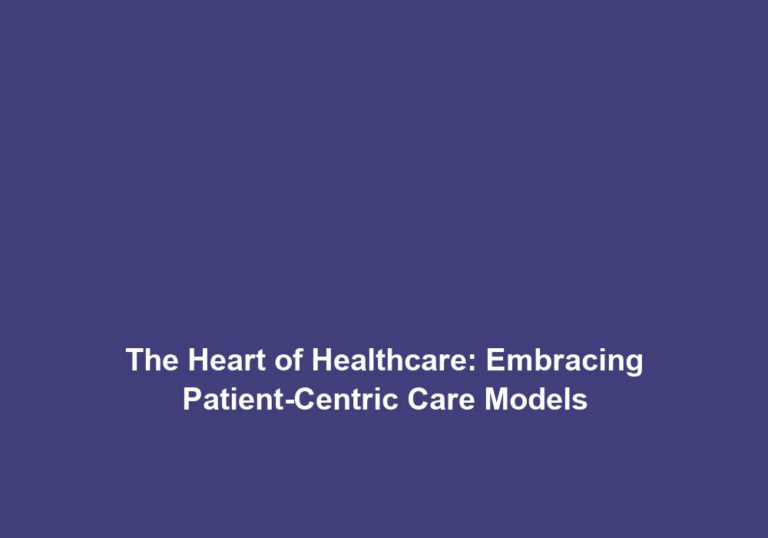Revolutionizing Care: Shifting to a Patient-Centric Model in Clinics
In recent years, there has been a significant shift in the approach to healthcare, with clinics and medical facilities embracing a patient-centric model. This revolutionary change aims to prioritize the needs and preferences of patients, focusing on delivering personalized care and enhancing overall patient experiences. By adopting this approach, healthcare providers can improve outcomes, increase patient satisfaction, and ultimately shape a more efficient and effective healthcare system. In this article, we will explore the key elements of a patient-centric model and its impact on clinics.
The Importance of a Patient-Centric Model
Traditionally, healthcare systems revolved around a provider-centric approach, where medical professionals made decisions based on their expertise, often overlooking individual patient preferences and circumstances. However, with the evolving dynamics of the healthcare industry, it has become evident that engaging patients in their care decisions leads to better health outcomes and greater patient satisfaction.
By adopting a patient-centric model, clinics can ensure that patients are active participants in their healthcare journey. This approach recognizes the unique needs and values of each individual, promoting shared decision-making and empowering patients to become advocates for their health.
Key Elements of a Patient-Centric Model
1. Personalized Care Plans
A patient-centric model emphasizes the development of personalized care plans tailored to each patient’s specific needs. Healthcare providers take into account factors such as medical history, lifestyle, and preferences to create comprehensive and individualized treatment strategies. This approach not only improves patient outcomes but also increases patient engagement and adherence to recommended treatments.
In a patient-centric model, healthcare providers work closely with patients to understand their goals, concerns, and values. By considering these factors, personalized care plans can be designed to address the unique needs of each patient. This may involve considering alternative treatment options, accommodating patient preferences, and incorporating holistic approaches to care. The aim is to create a plan that aligns with the patient’s values, enhances their overall well-being, and increases their motivation to actively participate in their own care.
To further enhance the personalization of care plans, clinics can leverage advanced technologies such as artificial intelligence and predictive analytics. These tools can analyze large amounts of patient data to identify patterns, predict potential health risks, and recommend tailored interventions. By incorporating these technologies, clinics can provide patients with proactive and preventive care, ultimately improving health outcomes.
2. Enhanced Communication and Collaboration
Effective communication between healthcare providers and patients is crucial for a patient-centric model to thrive. Clinics need to establish clear channels of communication, ensuring that patients can easily reach out to their healthcare team, ask questions, and receive timely responses. This may involve utilizing technology such as telemedicine platforms, patient portals, or secure messaging systems to facilitate regular communication.
In addition to patient-provider communication, collaboration among healthcare professionals is essential. The patient’s care should be coordinated seamlessly across different specialties, ensuring that all providers involved in the patient’s treatment plan are well-informed and working together towards the common goal of improved patient outcomes.
To foster effective communication and collaboration, clinics can implement multidisciplinary team meetings and case conferences. These forums provide an opportunity for healthcare providers from various disciplines to discuss and review complex cases, share knowledge and expertise, and collectively make informed decisions. By promoting collaboration, clinics can ensure that all providers are on the same page, resulting in coordinated and comprehensive care for patients.
3. Empowering Patient Education
Empowering patients with knowledge about their health conditions, treatment options, and self-care practices is a vital aspect of a patient-centric model. By providing educational resources, healthcare providers enable patients to make informed decisions and actively participate in their care. This may include educational materials, workshops, or even access to online resources that offer reliable and evidence-based information.
Patient education should go beyond simply providing information. It should be interactive and tailored to the patient’s needs and preferences. Clinics can engage patients in shared decision-making by using decision aids, which are tools that present information about treatment options, potential risks and benefits, and help patients clarify their values and preferences. This shared decision-making process empowers patients to actively participate in their care, leading to better treatment adherence and improved health outcomes.
Additionally, clinics can offer health coaching and self-management programs to support patients in adopting healthy behaviors and managing chronic conditions. These programs provide patients with the necessary knowledge, skills, and resources to take charge of their health, promoting self-efficacy and long-term behavior change.
4. Embracing Technology
Integrating technology into healthcare practices plays a significant role in revolutionizing care delivery. By leveraging electronic health records (EHRs), clinics can streamline the documentation process, reduce errors, and improve overall efficiency. This enables healthcare providers to focus more on patient care and spend less time on administrative tasks.
Moreover, the use of telemedicine platforms allows patients to receive care remotely, eliminating geographical barriers and increasing access to healthcare services. This is especially beneficial for patients in rural areas or those with limited mobility.
In addition to EHRs and telemedicine, clinics can explore other technological advancements such as mobile health applications and wearable devices. These tools enable patients to actively monitor their health, track their progress, and communicate with their healthcare providers. By embracing technology, clinics can enhance patient engagement, improve care coordination, and facilitate personalized care delivery.
5. Continuous Quality Improvement
A patient-centric model thrives on continuous quality improvement. Clinics need to regularly evaluate their processes, gather patient feedback, and implement changes to enhance the overall patient experience. By analyzing data and measuring outcomes, healthcare providers can identify areas for improvement, optimize workflows, and ensure that patients receive the highest quality of care.
Clinics can establish quality improvement initiatives by implementing patient satisfaction surveys, conducting regular performance reviews, and engaging in benchmarking activities. These efforts provide valuable insights into the patient experience, highlight areas of strength and weakness, and guide quality improvement efforts.
Additionally, clinics can embrace a culture of continuous learning and professional development among healthcare providers. By promoting ongoing education and training, clinics can ensure that providers stay up to date with the latest evidence-based practices, enhance their clinical skills, and deliver high-quality care to patients.
Benefits of a Patient-Centric Model in Clinics
Embracing a patient-centric model in clinics offers numerous benefits for both patients and healthcare providers. Some of the key advantages include:
- Improved patient satisfaction: Patients feel valued, respected, and involved in their care, leading to higher levels of satisfaction.
- Enhanced health outcomes: Personalized care plans and increased patient engagement result in better treatment adherence and improved health outcomes.
- Increased patient loyalty: Patients who experience quality care are more likely to remain loyal to the clinic and recommend it to others.
- Efficient resource allocation: By focusing on personalized care, clinics can allocate resources more effectively, reducing unnecessary tests or treatments.
- Reduced healthcare costs: Proactive care and preventive measures can help minimize costly interventions and hospitalizations.
Conclusion
The patient-centric model represents a paradigm shift in healthcare, placing patients at the forefront of care delivery. By embracing this approach, clinics can revolutionize the way healthcare is provided, leading to improved patient outcomes, increased satisfaction, and a more efficient healthcare system overall. It is crucial for clinics to prioritize personalized care plans, effective communication, patient education, technology integration, and continuous quality improvement to successfully implement a patient-centric model. Through these efforts, clinics can truly revolutionize care and create a patient-centric healthcare environment.


